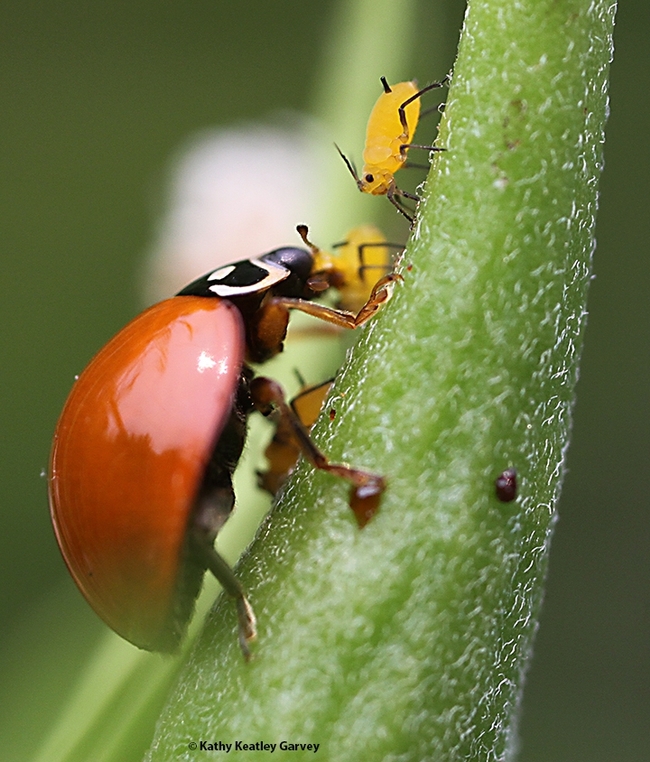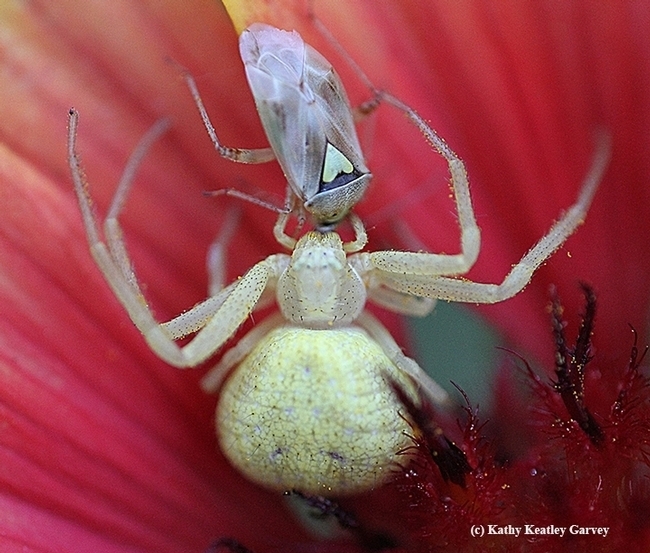- Author: Kathy Keatley Garvey
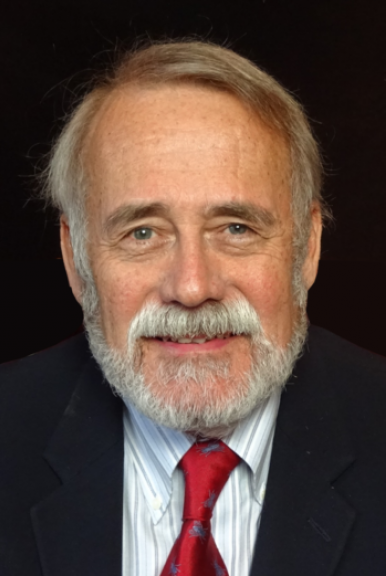
Do you know who discovered it?
That would be UC Davis distinguished professor James R. Carey of the Department of Entomology and Nematology, who will present a departmental seminar at 4:10 p.m. Wednesday, May 25, on "The Conceptual Sweep of a Mathematical Discovery in Insect Biodemography: From Medfly Populations to the U.S. Congress."
You can attend the seminar in person at 122 Briggs Hall, UC Davis campus, or access it via Zoom. The Zoom link is https://ucdavis.zoom.us/j/99515291076.
"Twenty years ago while attempting to develop a new concept for studying insect aging in the wild, I discovered a previously unknown mathematical identity now referred to in the formal demography literature as the eponym Carey's Equality—the age distribution of a stationary population equals the distribution of lifetimes yet to come," Professor Carey says in his abstract. "In this seminar I will present my attempts at both operationalizing the concept for study of populations of insects and other non-human species, and generalizing it for applications to groups with fixed numbers of members and where renewal involves birth and death processes."
"These general applications include data from a British cemetery, the National Basketball Association, the Baltimore Longitudinal Health Study, the U.S. Congress (both chambers) and the world population," said Carey, a member of the UC Davis Department of Entomology and Nematology faculty since 1980. "After discussing implications and extensions of the identity, I will wrap up with descriptions of five simple but important demographic relations that all entomologists should know."
Highly honored for his research, teaching and public service, Carey served as the principal investigator of a 10-year, $10 million federal grant on “Aging in the Wild,” encompassing 14 scientists at 11 universities.
Biodemography Textbook. In 2020, he and Deborah Roach, professor and chair of the University of Virginia's Department of Biology, co-authored a 480-page textbook, Biodemography: An Introduction to Concepts and Methods, published by Princeton University Press and hailed as the “definitive textbook for the emerging field of biodemography, integrating biology, mathematics and demography.” Carey recently created a free-access, video guidebook with a playlist of 175 separate presentations, subtitled in 300 different languages. He storyboarded the script, turned graphs, schematics, tables and equations into animated slides, and then with teleprompter assistance, narrated and video-recorded the 175 presentations, which span 12 hours of viewing. It appears on UC Berkeley Population Sciences website at https://bit.ly/3FTge7u.
An internationally recognized teacher, Carey won a 2018 global award in the Robert Foster Cherry Award for Great Teaching Program, an academic competition sponsored every two years by Baylor University, Waco, Texas. He received the 2015 Distinguished Achievement in Teaching Award from the Entomological Society of America (ESA) and the 2014 Distinguished Teaching Award from the Pacific Branch of ESA. The UC Davis Academic Senate honored him as the recipient of its 2014 Distinguished Teaching Award, given to internationally recognized professors who excel at teaching.
Carey is a fellow of four organizations: American Association for the Advancement of Science, Entomological Society of America, California Academy of Science and the Gerontological Society of America. He holds a doctorate in entomology (1980) from UC Berkeley, and two degrees from Iowa State University: a bachelor of science degree in animal biology (1973) and a master's degree in entomology (1975).
Nematologist Shahid Siddique, assistant professor, UC Davis Department of Entomology and Nematology, coordinates the spring seminars. He may be reached at ssiddique@ucdavis.edu for any technical issues regarding Zoom. (See complete list of spring seminars.)
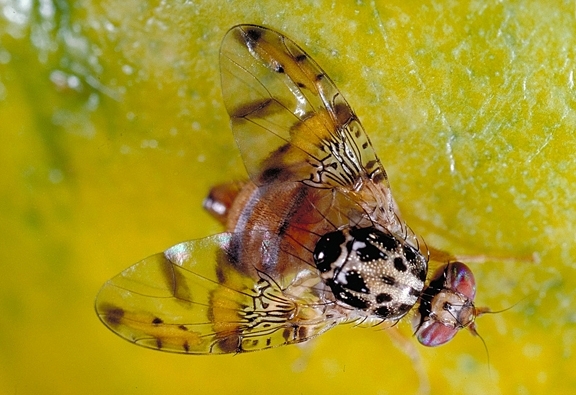
- Author: Kathy Keatley Garvey
It's World Bee Day!
How did that come about?
One word: Slovenia.
The Republic of Slovenia, rich in beekeeping history, asked the United Nations to proclaim an annual World Bee Day, and following a three-year international effort, the United Nations agreed to do so in December 2017.
So May 20 is the annual World Bee Day.
"Slovenia LOVES bees and beekeeping and it seems like California does, too!" says Wendy Mather, program manager of the UC Davis-based California Master Beekeeper Program (CAMBP). "There are 72 Apprentice Assistant and 93 Apprentice level candidates vying for their CAMBP certification this year! The '22 season is buzzing."
Mather points out: "World Bee Day is a confirmation that we humans respect and appreciate our dependence on one of our favorite generalist pollinators, the honey bee, for a healthy, diverse diet. Bee health equals human health and we thank all our CAMBP volunteers for their service to humanity in helping to raise awareness of the importance of bee health and science-based beekeeping. Our members are honey bee ambassadors and are committed to environmental stewardship."
Cooperative Extension apiculturist Elina Lastro Niño of the UC Davis Department of Entomology and Nematology, is the founding director of CAMBP. The organization has disseminated science-based beekeeping information through a network of trained volunteers since 2016.
CAMBP's vision is "to train Apprentice, Journey and Master level beekeepers so they can effectively communicate the importance of honey bees and other pollinators within their communities, serve as mentors for other beekeepers, and become the informational conduit between the beekeeping communities throughout the state and UCCE staff," according to its website.
Beekeepers and prospective beekeepers can sign up for classes, which run from February through October. Upcoming classes (many online but some in person)
- Honey Bee Health, May 21
- All About Varroa, June 4
- Queen Rearing Basics, June 11
- Pesticides, Colony Collapse Disorder, Research and Hope, June 18
- Wax Working, Honey and Hive Products, July 9
- Advanced Anatomy and Physiology of the Honey Bee, Aug. 13
- Seasonal Honey Bee Colony Management in Southern California, Sept. 17
- Broodminder: Apiary Technology and Honey Bee Health, Oct. 15
- Exploring Beekeeping in Person at the South Coast Research and Extension Center, Irvine, Oct. 22
That's it for the 2022 classes. In addition, there's an "Introduction to Mead" class offered Nov. 5. Mead or honey wine, is the world's oldest alcoholic beverage.
Let's hear it for the bees!
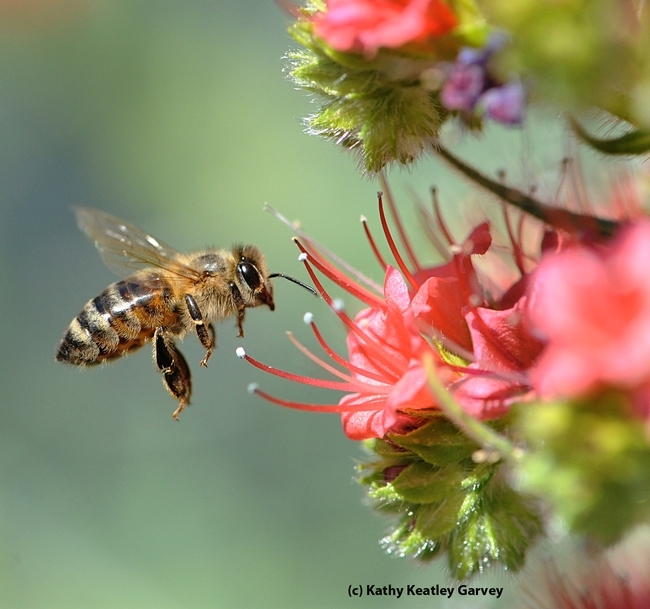
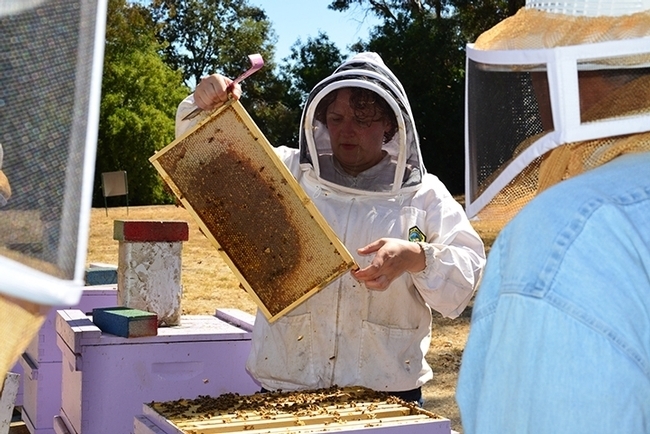
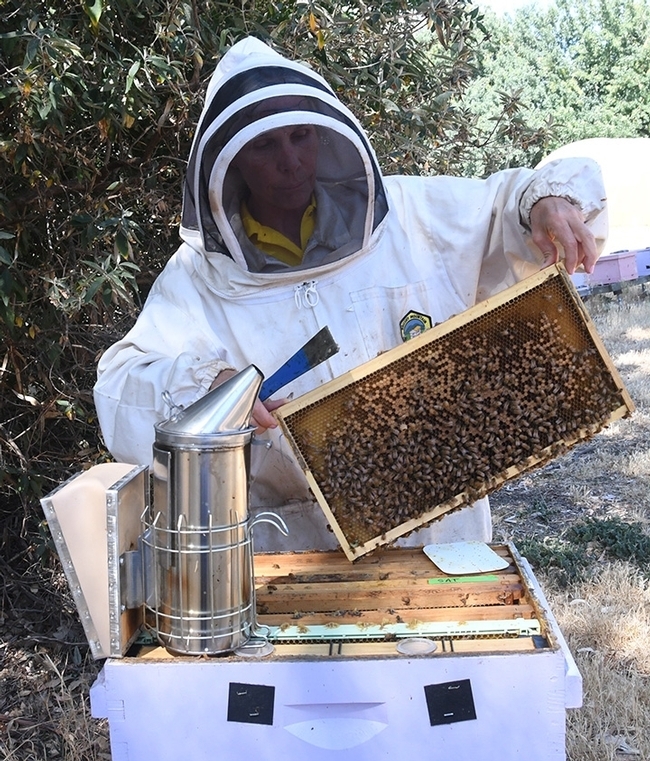
- Author: Kathy Keatley Garvey
So there we were, checking out the bumble bee mimics (Anthophora bomboides stanfordiana) on May 9 at Bodega Head, Sonoma County, and along buzzes a pollen-packing Habropoda miserabilis, the bee that UC Davis doctoral alumnus Leslie Saul-Gershenz studies.
The female bee was literally making a "bee-line" for the mustard and wild radish. Bee research scientist John Ascher identified it.
We remember when Saul-Gershenz lent her expertise to the "long lost" silver digger bees found in March of 2019 in the newly restored sand dunes at the San Francisco Presidio. The Presidio, a former military post, is now owned and operated by the National Park Service.
An authority on digger bees, Saul-Gershenz confirmed to the National Park Service officials that they are H. miserabilis and were probably common in the sandy dunes of that area as late as the 1920s. When non-native ivy, eucalyptus and ice plants took over their habitat, the bees disappeared.
“The discovery of a thriving native bee colony on the western side of the Presidio is the latest example of how the removal of invasive plants and the restoration of dunes and grasses at the former military base have helped bring back coastal habitat that thrived in San Francisco for tens of thousands of years before the city was built,” said Saul-Gershenz, formerly a research scientist with the U.S. Department of Agriculture (USDA) Agricultural Research Service.
“I am very happy to see this nest site at the Presidio,” she told us at the time. She's worked on the biology, chemical ecology and parasite interactions of this group of bees in the genus Habropoda for many years--on research trips that have taken her to the Oregon coast and the Mojave desert, among others.
She and several colleagues are completing a paper on H. miserabilis on its distribution and host plant use in western United States: "Habropoda miserabilis Cresson (Hymenoptera: Apidae): Floral Habits, Distribution, and Nesting Biology."
“This nest parasite M. franciscanus was originally described from the dunes in San Francisco near Lake Merced by Van Dyke in 1928,” Saul-Gershenz related. “It is presumed to be locally extirpated in San Francisco due to habitat alteration. However, its host bee, H. miserabilis, appears to have finally found a suitable nest location in a sand dune area being restored by the Presidio Trust in the Presidio National Park. The resiliency of nature provides hope for the future.”
In a news story published in the San Francisco Chronicle on March 29, 2019, science reporter Peter Fimrite quoted the UC Davis-trained entomologist as saying that the silver digger bees were “all but gone” by the mid-20th century. However, Saul-Gershenz has kept looking for them. In fact, she collected one near Baker Beach in 1998.
With restoration, comes hope for the return of native plants and insects.
"Biologists have reported a more than tenfold increase in the number of native plants in the Presidio, including at least four that are federally listed endangered or threatened, among them the Presidio clarkia," wrote Fimrite. "The Franciscan manzanita, which was believed to be extinct in the wild, was discovered in the Presidio in 2009. It was the first of its kind seen in its native San Francisco since the old Laurel Hill Cemetery was bulldozed in 1947 and paved over for homes."
Gershenz and collaborator Jocelyn Millar of UC Riverside and others deciphered the sex attraction of Habropoda miserabilis and the deceptive mimicking blend used by its nest parasite Meloe franciscanus working with a population on the coast of Oregon (Saul-Gershenz et al. 2018). They documented a new parasite-host location system while conducting research on related species in the same genus Habropoda pallida found in the Mojave and Sonoran Desert (Saul-Gershenz and Millar 2006).
The comeback of silver digger bees is not limited to San Francisco. Fimrite related that several other areas in California are witnessing comebacks, including Bodega Marine Reserve in Bodega Bay and Lanphere Dunes in the Humboldt Bay National Wildlife Refuge.
Yes, they are.

- Author: Kathy Keatley Garvey
If you've ever been to Bodega Head in Sonoma County, you may have marveled at the waves crashing and the whales surfacing.
But have you ever seen the digger bees, Anthophora bomboides stanfordiana, aka bumble bee mimics, that nest in the sandstone cliffs?
They're there. They're foraging on flowers, excavating their nests, and rearing young.
These digger bees are not easy to photograph. On our May 9th trip, we got lucky: our 200mm macro lens picked up a digger bee warming its flight muscles.
"The species name indicates that it is a bumble bee mimic," the late Robbin Thorp (1933-2019), a global authority on bumble bees and a UC Davis distinguished emeritus professor of entomology. "These bees need a source of fresh water nearby. Females suck up water, regurgitate it on the sandstone bank surface, then dig away at the soft mud. They use some of the mud to build entrance turrets, presumably to help them locate their nests within the aggregation of nests."
"The female," Thorp said, "sucks up fresh water from nearby, stores it in her crop (like honey bees store nectar) for transport to the nest. She regurgitates it on the sandstone, and excavates the moistened soil. She carries out the mud and makes the entrance turret with it."
Thorp, a 30-year member of the Department of Entomology and Nematology, studied these bees. (See his presentation at the Proceedings of the Symposium on Biodiversity of Northwestern California, Santa Rosa, delivered in October 1991.)
Today, community ecologist and associate professor Rachel Vannette from the same department, is among scientists engaged in the research of these fascinating bees.
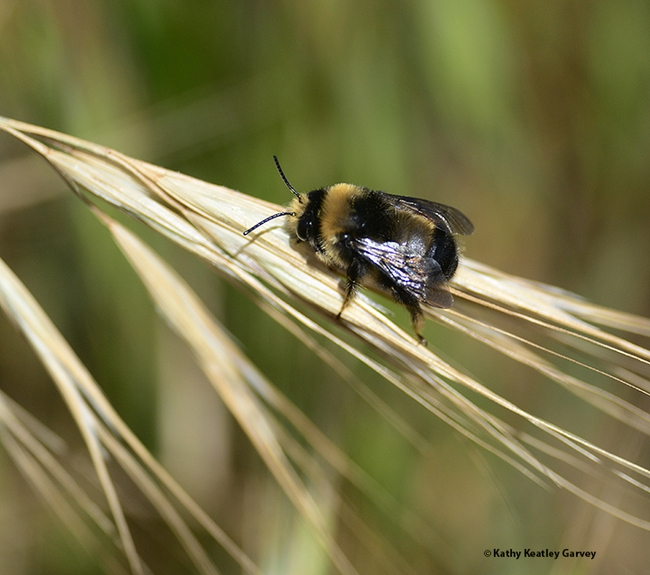
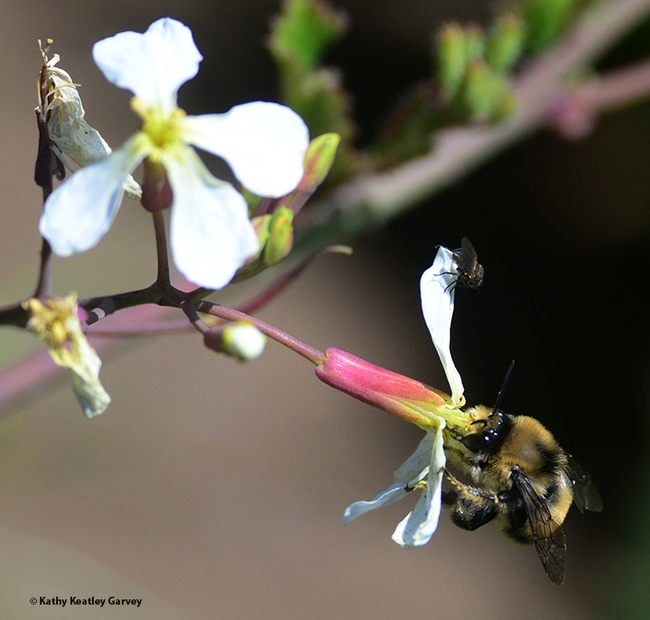
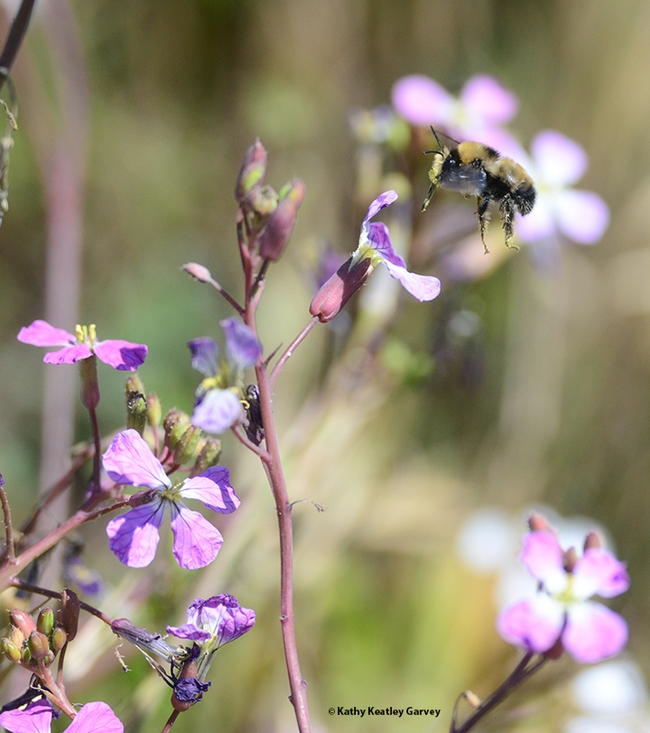
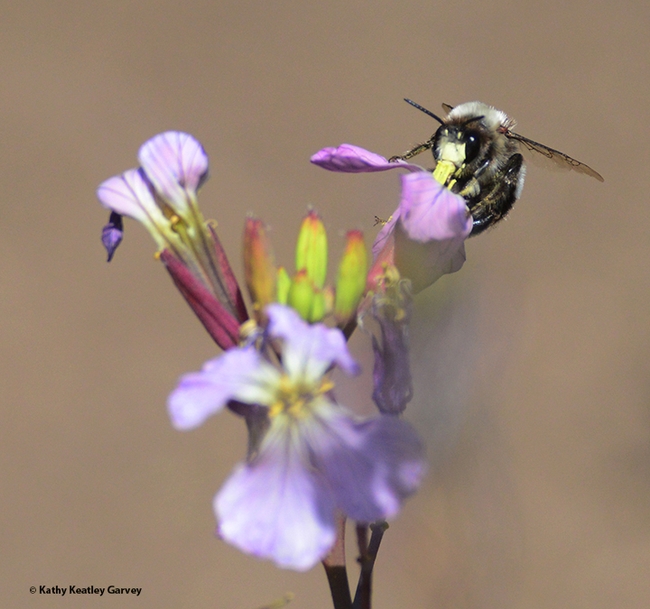
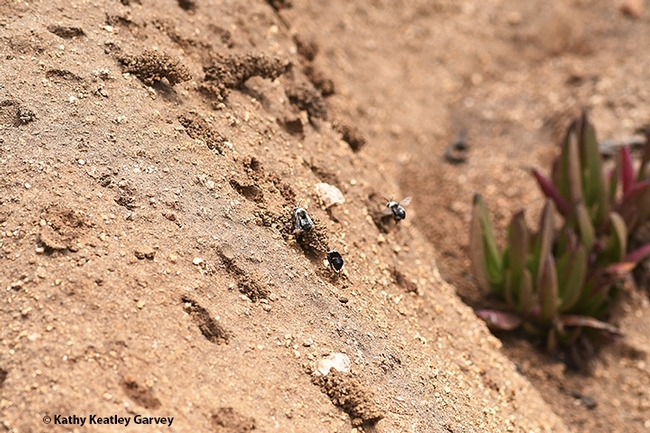
- Author: Kathy Keatley Garvey

You're in luck.
The Bohart Museum of Entomology, located in Room 1124 of the Academic Surge Building on Crocker Lane, UC Davis campus, will host four public events from May 28 through July 16. All are free and open to the public. Parking is also free.
Saturday, May 28, 1 to 4 p,m.
Open house, "Bugs in Ag: What Is Eating Our Crops and What Is Eating Them?"
Cooperative Extension specialist and agricultural entomologist Ian Grettenberger of the UC Davis Department of Entomology and Nematology faculty will explore the relationships between insects and agriculture. His areas of expertise include field crops; vegetable crops; insects, mites and other arthropods affecting plants; biological control of pests affecting plants; and beneficial insects. Grettenberger, who joined the UC Davis faculty in January 2019, targets a wide variety of pests, including western spotted and striped cucumber, beetles, armyworms, bagrada bugs, alfalfa weevils, aphids, and thrips.
Saturday June 25, 1 to 4 p.m.
Open house, "Eight-Legged Encounters"
This event is all about arachnids featuring scientists from across the country. It is in collaboration with the American Arachnological Society's 2022 meeting, scheduled June 26-30 on the UC Davis campus. The annual meeting will be hosted by two UC Davis arachnologists: Jason Bond, the Evert and Marion Schlinger Endowed Chair in Insect Systematics, UC Davis Department of Entomology and Nematology, and associate dean, College of Agricultural and Environmental Sciences, and Joel Ledford, assistant professor of teaching, Department of Plant Biology, College of Biological Sciences.
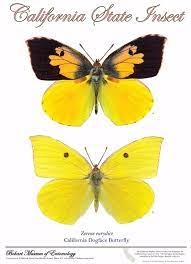
Public event to be held in California Hall for arachnid novices and experts alike. This is in collaboration with the American Arachnological Society's meeting at UC Davis.
Saturday, July 16, 1 to 4 p.m.
"Celebrating 50 Years of the Dogface Butterfly:California's State Insect"
Scientists and the public will celebrate the 50th anniversary of the California State Legislature' designation of the dogface butterfly as the state insect.
Folsom Lake College professor and Bohart scientist Fran Keller, and Bohart associate Greg Karofelas, a volunteer docent for the Placer Land Trust's dogface butterfly tours, will on hand to discuss the butterfly. The California dogface butterfly, Zerene eurydice, is found only in California. It thrives in the 40-acre Shutamul Bear River Preserve near Auburn, Placer County. The preserve, part of the Placer Land Trust, is closed to the public except for specially arranged tours.
Keller is the author of 35-page children's book, The Story of the Dogface Butterfly, with photos by Keller and Kareofelas, and illustrations by former UC Davis student Laine Bauer. Kareofelas' images include the life cycle of the dogface butterfly that he reared. Keller holds a doctorate in entomology from UC Davis, where she studied with major professor Lynn Kimsey, director of the Bohart and UC Davis distinguished professor of entomology.
Kareofelas and Keller also teamed to create a dogface butterfly poster of the male and female. Both the book and the poster are available online from the the Bohart Museum of Entomology gift shop.
California legislators adopted the dogface butterfly as the official state insect on July 28, 1972. But as early as 1929, entomologists had already singled it out as their choice for state insect. Their suggestion appears in the California Blue Book, published by the State Legislature in 1929. (Read more on how the butterfly became the state insect under the Ronald Reagan administration.)
The dogface butterfly is so named because the wings of the male appear to be a silhouette of a poodle. It is also known as "the flying pansy."
Bohart Museum. The Bohart Museum is the home of a worldwide collection of eight million insect specimens, plus a gift shop and a live "petting zoo," comprised of Madagascar hissing cockroaches, stick insects and tarantulas.
Bohart Museum Contact information:
https://bohart.ucdavis.edu/
(530) 752-0493
bmuseum@ucdavis.edu
